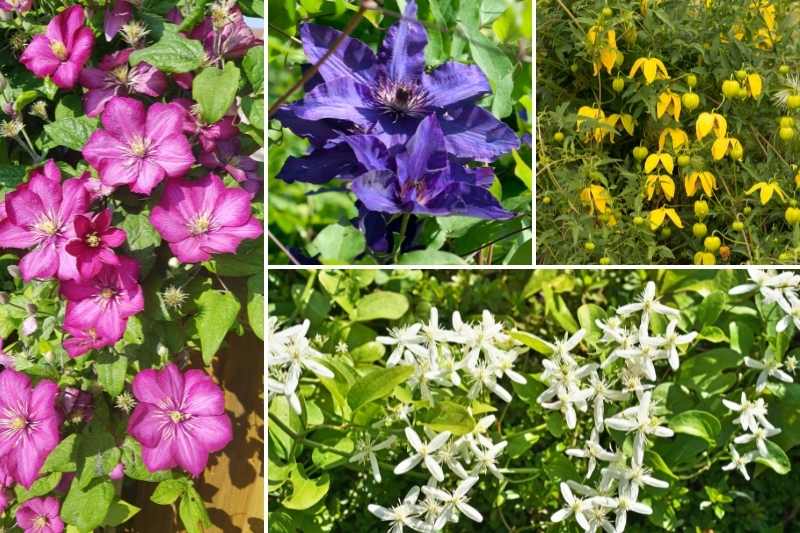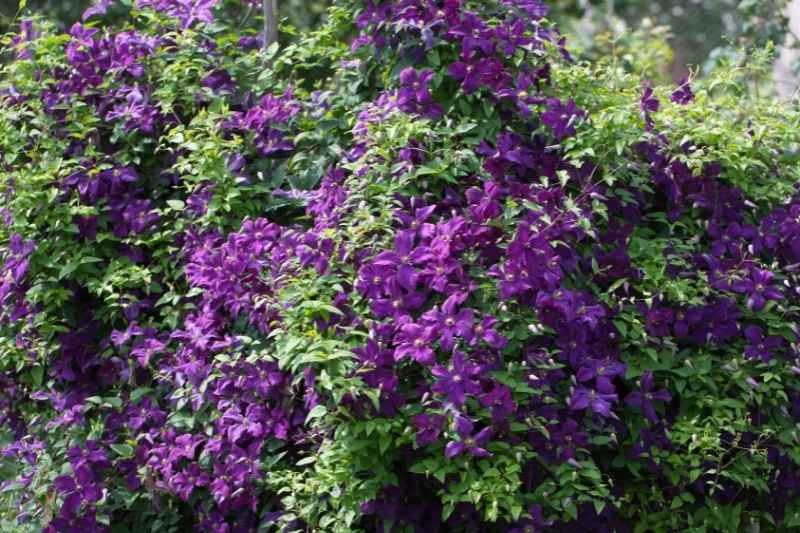Clematis flowering in summer or late into autumn are pruned in February–March. Those concerned are clematis classified in group 3, that is clematis with large flowers in mid to late summer, as well as clematis in group 2 that flower in spring and again late summer on shoots of the year. This winter pruning of clematis ensures a good production of flowers, and also helps prevent the base becoming naked. If started in time and by identifying clematis that need this winter pruning, task is not as arduous as it may seem.
Follow our advice to avoid mistakes when pruning summer clematis.
1 - Which clematis should be pruned in winter?
Can’t remember which clematis variety you planted? As a guide, clematis to prune in winter are varieties producing large flowers in profusion in summer (June to September) or late summer. These are the following species, traditionally classified in clematis group 3 (group 1 includes clematis flowering in early spring with small flowers, and group 2 clematis with large flowers in late spring):
- Clematis viticella and its hybrids : many cultivars exist including famous Jackmanii clematis, ‘Ville de Lyon’, ‘Perle d’Azur’, ‘Prince Charles’, etc ;
- Clematis tangutica and Clematis orientalis : they flower in yellow, with drooping bell-shaped flowers ;
- Clematis tibetana and Clematis terniflora ;
- Clematis texensis : flowers are smaller, either drooping bells or upright tulip-like shapes.
Clematis in group 2 are also concerned, they are less numerous and are often called early-flowering clematis: they produce superb large single or double flowers from late spring in June. These clematis have the particularity of flowering twice, first on last year’s shoots in June–July, then on new shoots of the year in late summer such as popular 'Nelly Moser' or 'The President' and 'Asao'. They are therefore perpetual climbers.
Remember that only these clematis require regular pruning to flower evenly and well.

Pink Clematis viticella 'Ville de Lyon', violet-blue Clematis 'The President', Clematis tangutica with yellow bell-shaped flowers, and below, Clematis terniflora, all white
2- When and why pruning?
For all these clematis, it is important to prune at right time of year otherwise you risk a climbing plant with few flowers, flowering only on terminal parts and leaving plant unevenly flowered.
As they flower later than others, a winter pruning, from February to early March, regenerates them at right time since they flower on shoots of the year. Prune therefore before or just at moment of growth resumption. This winter pruning is essential for them to produce large numbers of flowers: they will then have plenty of time to produce vigorous new shoots before warmer weather. Ideally work on a day with mild temperatures and no risk of frost.
3- How to prune your clematis?
Equipment
- pruning shear disinfected and sharpened beforehand
- pair of flexible gloves
Steps
Clematis in group 3 : this is simplest case since they flower only on shoots of the year:
- Begin by untangling old stems in place, taking care to remove ties used for training so as not to snap shoots ;
- Prune stems of the year to 30–50 cm above ground, about 3 internodes, always just above a bud or above new shoots if they have already appeared. The later the flowering, the more severe pruning can be, down to 30 cm above ground. This drastic pruning induces many vigorous new stems ;
- Also prune dead branches and weak shoots by cutting back to ground level ;
- Gather prunings and cut them into smaller pieces to feed compost ;
- You can add well-rotted compost or an organic amendment at its base to boost growth further.
Clematis in group 2 : pruning is much less radical; you have likely already cut back shoots that flowered in late spring of previous year. Now just prune dead branches as for group 3 and cut back every other stem (the older ones) to 30–40 cm above ground, always at a bud.

Winter pruning allows summer clematis to develop a profusion of flowers across whole plant
To go further
- Discover our range of clematis in our online nursery
- Learn more with our complete file: Clematis: plant, prune and maintain
- Find out how to clean, maintain and protect your gardening tools
- Top 10 Clematis viticella varieties !
































Comments